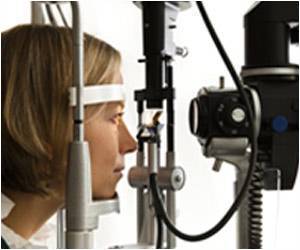The American Academy of Sleep Medicine (AASM) has issued a new guideline that includes treatment recommendations for people with REM sleep behavior disorder.
- REM sleep behavior disorder can lead to potentially violent and harmful behaviour
- A new guideline offers therapy suggestions for persons who act out their imaginations while sleeping
- The guideline recommends specific drugs for clinicians to consider when treating individuals with REM sleep behavior disorder
“REM sleep behavior disorder is common, affecting more than 80 million people worldwide,” said lead author Dr. Michael Howell, chair of the AASM task force and a professor and division head of sleep medicine in the department of neurology at the University of Minnesota in Minneapolis. “This clinical practice guideline provides clinicians with insight on how best to prevent sleep-related injury and how to provide patients with a risk assessment for neurological disease. The task force assembled by the AASM diligently reviewed thousands of clinical studies to provide an up-to-date guideline for clinicians managing REM sleep behavior disorder."
What is REM Sleep Behavior Disorder
REM sleep behavior disorder is classed as parasomnia, which is a set of sleep disorders characterized by unpleasant bodily occurrences or experiences that occur when falling asleep, sleeping, or waking up. REM sleep is distinguished by fast eye movements and dream activity, as well as skeletal paralysis. This paralysis, or muscle atonia, is absent in REM sleep behavior disorder, causing people to act out their dreams in dangerous ways. These dreams are typically unpleasant, action-packed, or violent, with the dreamer challenged, attacked, or pursued by unknown persons or animals. REM sleep behavior disorder symptoms are disregarded for years, generally, until an injury happens to the dreamer or the bed partner. REM sleep behavior disorder is frequently caused by an underlying neurological ailment, such as Lewy body dementia, Parkinson's disease, multiple system atrophy, narcolepsy, or stroke.Treatment of REM Sleep Behavior Disorder
The guideline recommends specific drugs, such as clonazepam and immediate-release melatonin, for clinicians to consider when treating individuals with REM sleep behavior disorder. To identify the optimal course of action, the physician must employ clinical knowledge and expertise, as well as strongly evaluate the patient's values and desires. Treatment options are also determined by whether the REM sleep behavior disorder is isolated, related to another medical disease, or drug-induced.Maintaining a Safe Sleeping Environment for People with Severe REM Sleep Behavior Disorder
The guideline also underlines the importance of patients maintaining a safe sleeping environment to avoid injuries while sleeping. The recommendation is to remove any nightstand objects that could easily damage someone while they are sleeping. Sharp furniture should be moved or padded, and a soft carpet or mat should be placed next to the bed in case of a sudden fall. People with severe REM sleep behavior disorder should be recommended to sleep separately from their spouses until they are treated to limit the risk of injury.The AASM commissioned a task group of sleep medicine clinicians with expertise in REM sleep behavior disorder to create the guideline. They developed clinical practice recommendations based on a systematic evaluation of the literature and evidence assessment using the GRADE method, taking into account the quality of evidence, positive and detrimental impacts, patient values and preferences, and resource utilization.
Source-Medindia
















